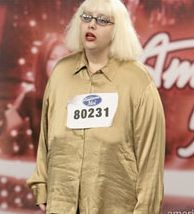It’s not often that you finish off a film at two o’clock in the morning only to find yourself sitting in the same theater 6 hours later to begin the next. Well, at Sundance – what else are you there for? Although the celebration of independent film exists as the centerpiece of this two week festival, I question whether or not it is the primary result. Up until this point (less than 24 hours after arrival), watching two significant films has only been an excuse to experiencing something beyond the films themselves.
 Only 12 hours ago, myself and a few friends were fortunate to obtain a few tickets to the documentary War/Dance, one of two films pre-bought (ThinkFilm) prior to its arrival at Sundance. Roughly an hour ago, we concluded the viewing of the feature film Save Me, the story of a young man’s journey through the 12 step program of a Christian “ex-gay” ministry. (Yes, a program that “removes” one’s gayness). Rather than review the films themselves, I would like to make a few observations surrounding these films and what I am suddenly discovering as the mysterious “spirit of Sundance.”
Only 12 hours ago, myself and a few friends were fortunate to obtain a few tickets to the documentary War/Dance, one of two films pre-bought (ThinkFilm) prior to its arrival at Sundance. Roughly an hour ago, we concluded the viewing of the feature film Save Me, the story of a young man’s journey through the 12 step program of a Christian “ex-gay” ministry. (Yes, a program that “removes” one’s gayness). Rather than review the films themselves, I would like to make a few observations surrounding these films and what I am suddenly discovering as the mysterious “spirit of Sundance.”
Two words come to mind: Story and Conversation. Although movies are often deemed definitively as “entertainment”, it has been far from a conclusive experience once the credits have rolled. The stories presented in War/Dance – of Northern Uganda children escaping from the terror of senseless killings and abductions via the art of music and dance – are both inspiring and incomprehensible. As my own story was placed in stark contrast to these realities, I was left grasping for the same life, freedom, and joy that these children embody. These are profoundly different stories midst profoundly similar pursuits.
 This morning, after watching Save Me , a Q & A session ensued with the cast, director, and producers. Because the subject matter of homosexuality and the Christian faith are often catalysts to heated debates and “right” and “wrong” language, this morning’s experience was all the more intriguing. It was at the film’s conclusion that I found myself, a professed “Christian”, surrounded by the tears from numerous individuals, both gay and straight—completely distraught by what I had just experienced. I could not help but be embarrassed of my faith and its “typical” response to the gay community.
This morning, after watching Save Me , a Q & A session ensued with the cast, director, and producers. Because the subject matter of homosexuality and the Christian faith are often catalysts to heated debates and “right” and “wrong” language, this morning’s experience was all the more intriguing. It was at the film’s conclusion that I found myself, a professed “Christian”, surrounded by the tears from numerous individuals, both gay and straight—completely distraught by what I had just experienced. I could not help but be embarrassed of my faith and its “typical” response to the gay community.
However, as actor Chad Allen and actress Judith Light shared, I was taken aback by the non-threatening posture of the cast and crew (and the film for that matter). Nobody was enraged. Nobody was protesting. And nobody was blaming. Light commented on her own transformation within the role—having to “stop judging [Evangelicals].” Producer Herb Hamsher claimed the film as a “conversation”—one that differs from the typical dialogue that stays inside one’s own community with the wool pulled over the eyes. Hamsher expounded by stating, “We want to open the conversation and speak over the wool.” This was a profound gesture on behalf of the filmmakers, who had clearly succeeded in creating a diffused space of interaction, grace, and reconciliation—an environment that the Christian community often fall short in creating.
It was here that I realized the beauty of Sundance. Sure, it’s a “festival” of independent film. But, it seems to be more much more than this. If the first 24 hours are remotely telling —the celebration of both story and conversation are front and center. The conversation goes far beyond the theater. Whether on the bus with an actress from London, art students from inner city L.A., or the volunteer from Arizona, there is no doubt this nature is embraced by the broader Sundance audience, the question is – will the Christian community follow suit? I can’t speak for anyone else, but I’m throwing my hat in the ring.
– Bob Davidson
Bob Davidson, Fuller Theology Student and Sundance participant. To contact: bob @ mypopculture [dot] com
for further conversation, please check out the Windrider Film Forum.


